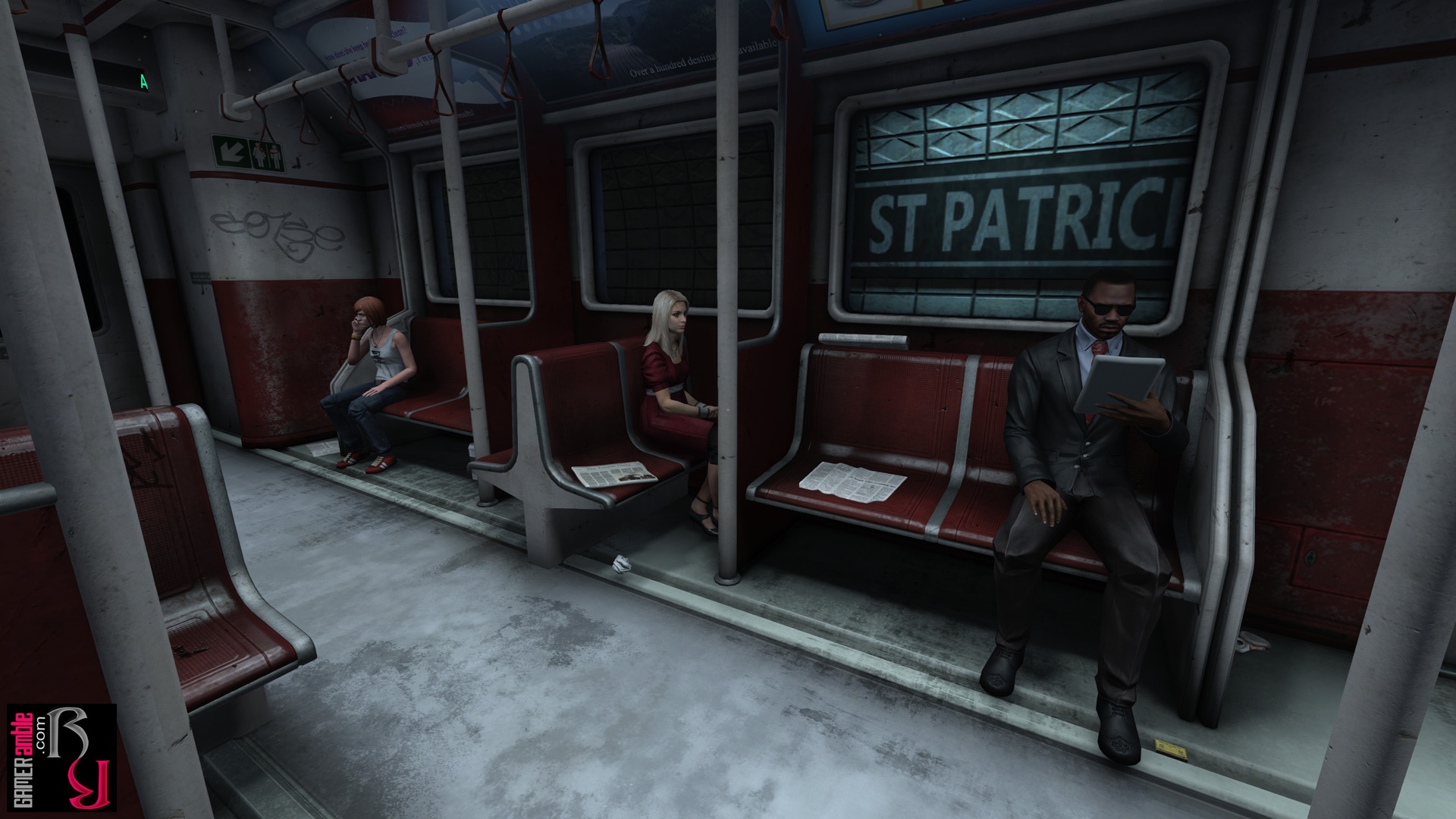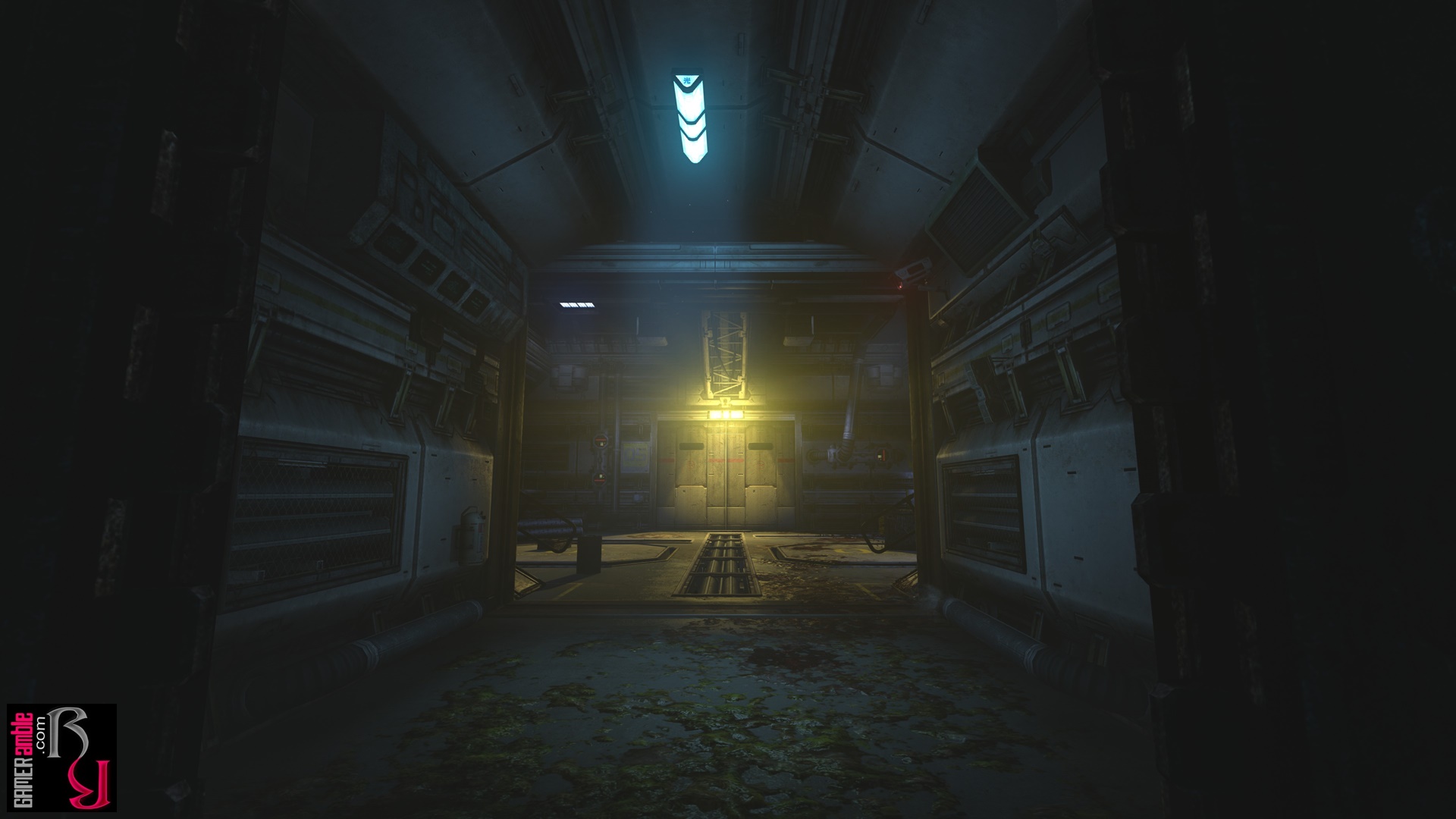SOMA
Developer: Frictional Games | Publisher: Frictional Games | Release Date: 2015 | Genre: Action / Adventure / Indie | Website: Official Website | Purchase: Steam
When trying to explain Soma to anyone without giving away any spoilers it usually results in the game sounding like a Bioshock rip-off. You’ve got a sprawling facility that is miles underwater. You’ve got the former inhabitants of the facility who are now rather less than friendly and you’ve got a protagonist who is trying to figure out where they are and what is going on. However, despite all of these similarities, the two games couldn’t be any more different if they tried. Both are undoubtedly great games with rich stories to tell, but only one of them has left us digesting its events long after the final credits rolled and that was Soma.
The protagonist of Soma is just an ordinary Canadian guy named Simon Jarrett. His life was upended after a car accident that left him with cranial bleeding. Through a series of events, Simon finds himself on PATHOS-11, an underwater research facility, which is where the real story begins. The problem is that we can’t say much more about the story without delving into serious spoilers and we really don’t want to ruin anything about this game. Suffice to say that where PATHOS-11 was once a hi-tech facility it now looks like H. R. Giger was hired as the interior decorator. Friendly faces are also few and far between, but Simon does partner up with a woman named Catherine who sheds some light on his situation. Avid sci-fi fans might figure out what’s going on and where the story is headed before all the big reveals happen, but the game still managed to pull the rug from under our feet a few times.
Soma is viewed from a first-person perspective, but don’t expect Simon to go in swinging weapons and gaining superpowers. Anything hostile you encounter can easily make mincemeat out of Simon, so avoiding them is your best course of action. In fact, just looking at some of the creatures for too long can be fatal, which means you need to stay low, stay silent, and stay behind cover if you want to survive. Having said that, the stealth aspect of the game is pretty forgiving and the monsters are really not the focus of the experience, so you don’t have to worry about spending hours cowering under a bed as an aggressive monster tries to sniff you out. Instead, the monsters are just one element of the game and often not even the scariest or unsettling ones at that. The developers have even patches in an easy mode, which negates the threats from the monsters entirely, but we recommend at least playing on the default mode to get the true experience.
Large parts of Soma involve exploring your surroundings, finding whatever is needed to progress, or discovering what happened to the people who once inhabited the complex. There are some minor puzzles to solve too, but thankfully all of them are quite logical and make sense in the context of the game world. Since you have no inventory to worry about or health bar to monitor the interface of Soma is kept completely free of clutter. This makes for a much more immersive experience as there is nothing on your screen to distract you from your surroundings or remind you that you are just playing a game. Of course, the downside of such a minimal interface is that there are no maps and objective markers either. For us, this helped with the immersion, but we can understand if some players find it annoying or frustrating if their sense of direction and note-taking skills are not up to scratch.
The visuals for the game still looks great and the amount of detail that has gone into the environments are downright impressive. Sure, you’ll see copious amounts of blood, gore, and dismembered bodies, but each space in Soma is also filled with all kinds of items that can be picked up, examined, and thrown about. Virtually none of them have any importance in the grand scheme of things, but add a sense of realism and weight to your actions. Tossing a fire extinguisher through a window to gain access to a locked room is great, but you’ll curse all that debris strewn across the floor when you are trying to stealthy sneak away from a monster. However, it’s the underwater scenes that are the most impressive and also most oppressive as your field of view shrinks down and the crushing weight of the ocean above you sinks in. Simon’s brief trips outside the facility are amongst our favorite parts of the game. These outdoor sections initially offer a breather from the claustrophobic interiors, but the deeper you go the darker and scarier they become. The game makes good use of light and dark to keep things tense and in terms of visuals, it is only the human character models that show their age.
The excellent sound design undoubtedly contributes to the atmosphere of the game and Frictional Games has nailed everything from the sound effects and music to the voice acting. The game isn’t afraid to tone down the music and let you appreciate the awesome sound effects either. Whether it is listening to the footsteps and groans of enemies to pinpoint their location or the deep conversations Simon has with Catherine, there’s very little to fault about the audio. We also like the fact that Simon is quite a talkative character as it offers some more insights into what he is thinking or feeling throughout all the madness. Even the environmental effects help a lot to contribute towards the feeling that you are in a hostile environment where anything could happen at any time.
As the game is viewed in the first person it makes use of the default WASD controls for navigating your environments. Simon can run and jump, but mostly you will be strolling around examining your environment, reading notes on computer terminals, or picking up objects to use in other locations. Your interaction with the game world is made more immersive by the fact that you are not just pushing buttons but have to grab, shove, pull, or flip things as well. Also, Simon can lean left or right, which is useful for peeking around corners to see if any enemies are around. However, most monsters will cause visual distortions, so you’ll always know when they are closing in on your position. Getting caught is often not a death sentence either as the first time it happens you’ll just be left dazed and confused, but given an opportunity to be more careful. Special nodes dotted around the facility also serves as a way to clear the visual impairments that Simon suffers as a result of getting caught. You can still die, though, which sends you back to the last autosave, which thankfully is usually not too far back. Soma doesn’t have any quick loading or saving, but the game does save every time you exit, so you are free to go take a breather whenever things become too much.
Soma is not a very long experience, but it is definitely very memorable. The game is also very linear, which in conjunction with its story-driven design means that after one playthrough you will have seen everything it has to offer. What is really cool is that the developers have included a bunch of ethical and moral choices in the game that does not influence the ending or what achievements you get. This means they are entirely up to you as a player, which ironically lends them even more weight. We are not going to give any examples of these as they are some of our favorite moments in the game, but a few of them really made us think long and hard about what we were about to do. Once the choice is made, it’s done, so no achievement pops up to congratulate or scold you, no message stating whether what you did was good or bad, just the consequences of your actions.
All in all, Soma lives up to its promise of telling an unsettling story about identity, consciousness, and what it means to be human. It’s really a hard game to review as the less you know about Soma, the more you will enjoy the experience. Soma is also not a full-on horror game as the monsters are just one small element of the experience, so don’t let the frights scare you away. If you enjoy games that can pull you in and make you think, then you are going to love Soma. It tells a genuinely interesting story that remains riveting right to the very end and jumping out of your skin in fright a few times along the way is a small price to pay to get there.
System Requirements
- Minimum PC System Requirements
- Recommended PC System Requirements
- Minimum Mac OS X System Requirements
- Recommended Mac OS X System Requirements
- Minimum SteamOS + Linux System Requirements
- Recommended SteamOS + Linux System Requirements
- OS: 64-bit Windows Vista
- Processor: Core i3 / AMD A6 2.4Ghz
- Memory: 4 GB RAM
- Graphics: NVIDIA GeForce GTX 260 / AMD Radeon HD 5750. OpenGL 3.3
- Storage: 25 GB available space
- Additional Notes: Integrated Intel graphics are not supported. They should work (Intel HD 4000-series or better), but with issues.
- OS: 64-bit Windows 7
- Processor: Core i5 / AMD FX 2.4Ghz
- Memory: 8 GB RAM
- Graphics: NVIDIA GeForce GTX 480 / AMD Radeon HD 5970. OpenGL 3.3
- Storage: 25 GB available space
- Additional Notes: Integrated Intel graphics are not supported. They should work (Intel HD 4000-series or better), but with issues.
- OS: 64-bit 10.9
- Processor: Core i3 2.4Ghz
- Memory: 4 GB RAM
- Graphics: NVIDIA GeForce GTX 260 / AMD Radeon HD 5750. OpenGL 3.3
- Storage: 25 GB available space
- Additional Notes: Integrated Intel graphics are not supported. They should work (Intel HD 4000-series or better), but with issues.
- OS: 64-bit 10.10
- Processor: Core i5 2.4Ghz
- Memory: 8 GB RAM
- Graphics: NVIDIA GeForce GTX 480 / AMD Radeon HD 5970. OpenGL 3.3
- Storage: 25 GB available space
- Additional Notes: Integrated Intel graphics are not supported. They should work (Intel HD 4000-series or better), but with issues.
- OS: 64-bit Major Linux distribution from 2014
- Processor: Core i3 / AMD A6 2.4Ghz
- Memory: 4 GB RAM
- Graphics: NVIDIA GeForce GTX 260 / AMD Radeon HD 5750. OpenGL 3.3
- Storage: 25 GB available space
- Additional Notes: Proprietary drivers. Integrated Intel graphics are not supported. They should work (Intel HD 4000-series or better), but with issues.
- OS: 64-bit Major Linux distribution from 2014
- Processor: Core i5 / AMD FX 2.4Ghz
- Memory: 8 GB RAM
- Graphics: NVIDIA GeForce GTX 480 / AMD Radeon HD 5970. OpenGL 3.3
- Storage: 25 GB available space
- Additional Notes: Proprietary drivers. Integrated Intel graphics are not supported. They should work (Intel HD 4000-series or better), but with issues.






















